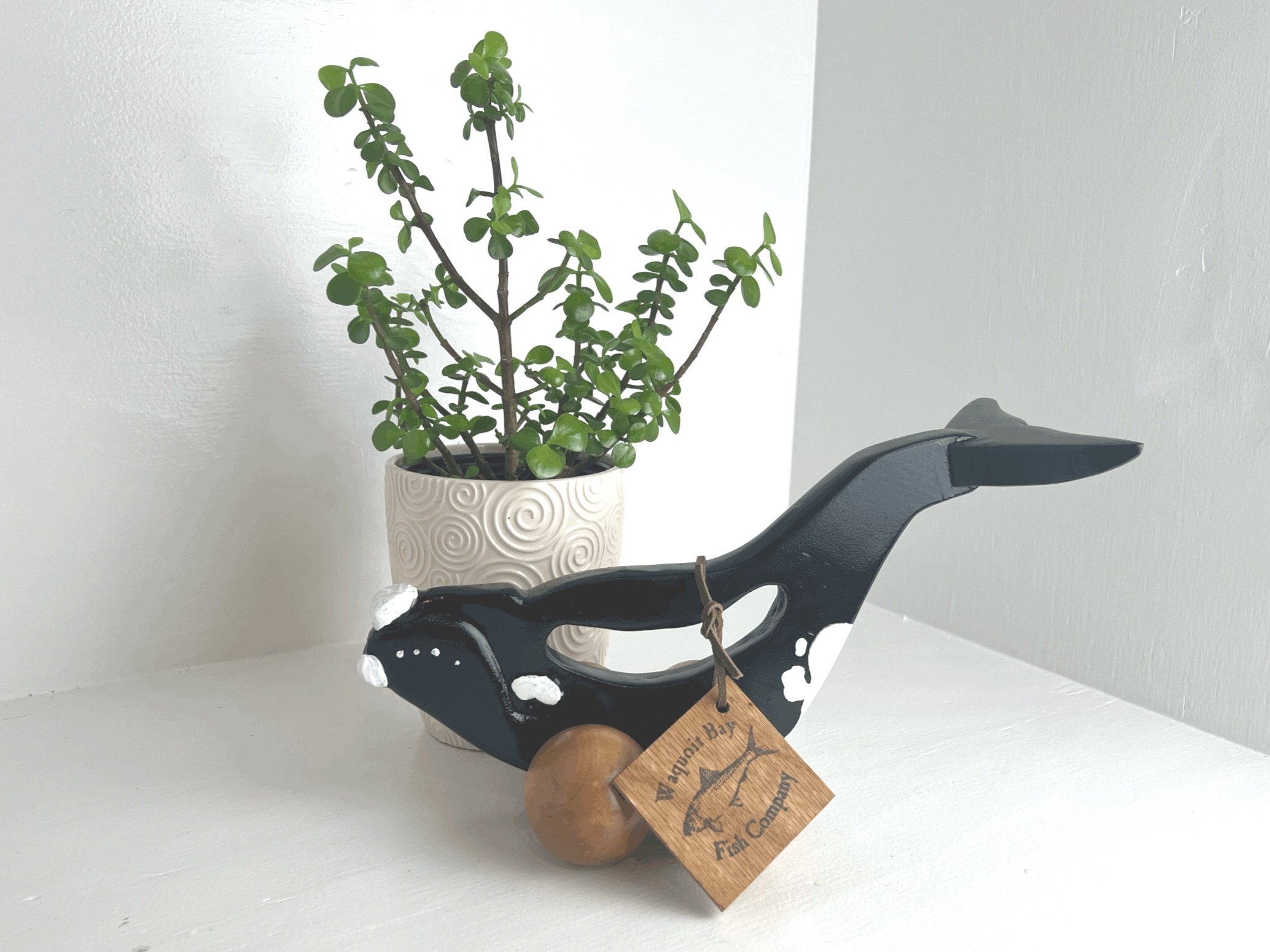The Right Whale Project
The right whale got its name because it was the ‘right’ whale to hunt. It feeds and lounges near the surface, is slow moving, and floats when dead. It was perfect quarry for whaling ships to find, capture, and process. As early as the 16th century, right whales were being harvested off the shores of North America by Basque sailing ships. Due to their proximity to the whaling centers in New England, the North Atlantic right whale (Eubalaena glacialis) population was commercially depleted by the end of the 18th century. The population plummeted to as few as 100 individuals by the mid-1900s. Today, the population remains endangered with fewer than 350 individuals in existence. Low calf survival challenges the species’ ability to counter threats such as climate change, ship strikes, fishing gear entanglements, and ocean noise.
While the seasonal migration of each individual is unique, right whales tend to overwinter in the waters off the southeast United States where calves are born. In mid-winter the whales begin their northward migration, congregating in the plankton rich waters of Cape Cod in late-winter and early-spring before continuing their northward migration in search of food and mates. Whale migration patterns are not always predictable. In 2010, around half of the right whales went missing from their typical summer feeding grounds in the Bay of Fundy. And it happened again in subsequent years. It wasn’t until 2015 that parts of the mystery began to reveal themselves when researchers began picking up high concentrations of whales far to the north in the Gulf of St. Lawrence. Precisely why these whales changed their migration patterns is still unknown.
The North Atlantic right whale has considerable regional importance here on Cape Cod due to its historical role and its impacts on present day industries. As the colonial whaling industry developed, Native Americans, and in particular the Wampanoags became renowned as whalers. They were noted for their harpooning skills and resolve. Tashtego, of Moby Dick fame, was an Aquinnah Wampanoag (Gay Head, Martha’s Vineyard). Today, government officials, conservationists, scientists, and industry representatives are working to find policy solutions that will protect the right whale while also maintaining the economic vitality of critical industries like commercial fishing, wind development, and whale watching. Laws need to be followed or changed, difficult decisions will need to be made, and humans will be impacted. The fate of the species hinges on the effectiveness of the marine policies, climate, biology, and maybe a little bit of luck.
Here at the Waquoit Bay Fish Company we’ve been wanting to honor the majestic North American right whale for some time. For over a year, there’s been a block of pine sitting on the work bench reserved for carving a right whale into the round. Its still there – gathering dust - and there it will sit for another day (or year). A month or so ago I was cranking away on a shelf project and going crazy with the hole saw. When I was done, I had four-two and half inch wood plugs leftover. The plugs reminded me of the wheels on a wooden back massager and seemed too cool to throw into the scrap pile. What would a Waquoit Bay Fish Company version of a wooden massager look like? Unoriginally, my mind went straight to fish before remembering the valiant right whale waiting its turn in our project queue. Its body shape just might lend itself perfectly to a wooden massager. And so the right whale project was born.
After some initial sketches and playing with the body form, I got something that seemed workable. Using the leftover plugs, a prototype was hacked up, leaving the finish intentionally rustic to justify the corner cutting of my prototypical effort. For now, I was after feasibility, not perfection! I was happy with the first cut and pleasantly surprised to find that the fluke worked really well as a back-scratcher. I’d ended up making a multi-tool back scratcher.
Like all of the projects, I’d learned a lot from the first effort and decided that as cool as those wood plugs were, I wouldn’t be using them on future iterations of the right whale massager. They were far too much work to prepare and finish, and honestly, didn’t provide a very comfortable massage. I made a list of other improvements for the second version. Prior to starting the second version I generated plywood templates for all the wood cuts so that I could more easily and reliablbly reproduce these pieces down the road.
For the second version I used pre-fabricated rounded birch wheels. These proved easier to work with, and cut down the material preparation time significantly. I also made ergonomic improvements to the grip hole. Overall, I was happy with the second version, though I’ve got a short list of improvements I’ll be making for the third go-around as I ramp up production.
I had used a black stain on the whale body for the first iteration, but opted to use a black paint for the second version. It gave the finished product a much deeper color, more characteristic of the right whale. The black coloration is nice, but there’s something about the rustic look of the prototype that it still appealing. The Assistant Art Director here at the Waquoit Bay Fish Company has requested a pink version, so I suspect that we’ll continue to play around with the finishes on this one.
We think the North Atlantic right whale massager a fitting tribute to an endangered giant.

